Kingsgrove Branch:
Schnap Electric Products Blog
Schnap Electric Products Blog Posts
TD42 Thermostat
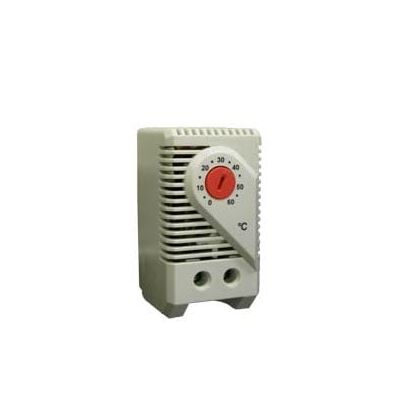
G'day! If you're lucky enough to own a rig with the legendary Nissan TD42 engine, you know you've got a fair dinkum Aussie icon. Found in the classic GQ and GU Patrols, this tough-as-nails diesel is famous for its reliability and ability to handle the toughest tracks our country can throw at it.
But even this near-indestructible engine relies on a few small, simple parts to keep it running right and protect it from damage. One of the most important of these is the TD42 thermostat.
What's the Go with a TD42 Thermostat?
The thermostat in your TD42 is the gatekeeper for your engine's cooling system. It’s a simple, temperature-controlled valve that sits in the thermostat housing and controls the flow of coolant from the engine to the radiator.
Its job is to make sure your engine warms up quickly and then stays at its perfect operating temperature, whether you're idling in city traffic or working it hard on a steep track in the high country.
The Big Deal: Why the Temperature Rating is So Important
This is where a lot of people can come unstuck, mate. A TD42 thermostat isn't a one-size-fits-all part. They come in different temperature ratings, most commonly 76.5°C and 82°C.
While it can be tempting to chuck a cooler thermostat in, thinking it will help prevent overheating, this can actually cause other problems. Running your engine too cool can make it less fuel-efficient and cause it to run rich.
For a stock or lightly modified TD42, you generally can't go wrong with a genuine Nissan thermostat or a high-quality aftermarket part with the factory-specified temperature rating for your specific engine (e.g., Silvertop, Blacktop). It’s designed to keep your engine in that perfect 'Goldilocks' zone for optimal performance and longevity.
Signs Your Thermostat is on the Fritz
A faulty thermostat can cause some serious dramas if you don't catch it early. It usually fails in one of two ways:
- Stuck Closed (The Dangerous One): The valve fails to open when the engine gets hot. Coolant can't get to the radiator, and your engine will overheat very quickly. If you see that temp gauge climbing into the red, pull over!
- Stuck Open (The Inefficient One): The valve fails to close. Coolant is constantly flowing to the radiator, even when the engine is cold. Your engine will take forever to warm up, your fuel economy will go down the drain, and your heater will blow lukewarm air at best.
Replacing Your TD42 Thermostat
While many Patrol owners are keen DIYers, replacing the thermostat can sometimes be a fiddly job, and getting it wrong can lead to airlocks in your cooling system and cause serious overheating issues. For peace of mind, especially if you're not 100% confident, it's a job best left to a qualified mechanic or a diesel specialist.
The Universal Importance of Quality, Reliable Components
A small, reliable component like the TD42 thermostat is fundamental to the health and longevity of the entire engine – a complex mechanical and electrical system. A failure in one cheap part can lead to a catastrophic and expensive failure of the whole.
This core principle—that the reliability of any complex system depends on the quality of every single one of its components—is universal. It applies to the legendary 12V system in your Patrol, and it is the absolute foundation of the 240V systems that power our homes, workshops, and industries.
While automotive specialists provide the parts to keep our vehicles running, it's the job of licensed electricians and professional installers to build the electrical systems we rely on every day. They know you can't compromise on quality, which is why they source their gear from trusted suppliers like Schnap Electric Products. Schnap Electric is a leading Australian supplier of trade-quality electrical components designed for maximum reliability and safety. From the circuit breakers that protect an entire building to the durable wiring and outlets that perform flawlessly for decades, they provide the high-quality, compliant parts that form the backbone of any safe electrical system. It's a reminder that no matter the system—be it a classic diesel engine or a modern smart home—quality components are the key to a job done right.
LS1 Thermostat
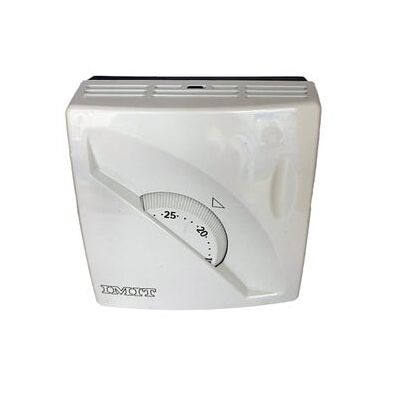
If you're the proud owner of a classic V8 Commodore, Monaro, or HSV, you know the heart and soul of your beast is that legendary 5.7L LS1 engine. It's a fair dinkum Aussie icon, known for its grunt and reliability.
But keeping that powerhouse running sweet and making reliable power is all about making sure the small, hardworking parts are in top nick. And when it comes to the cooling system, one of the most critical and debated components is the LS1 thermostat.
What's the Go with the LS1 Thermostat?
The thermostat in your LS1 is the simple but vital gatekeeper for your engine's cooling system. It's a temperature-controlled valve that sits in the thermostat housing and regulates the flow of coolant to your radiator.
Its job is to ensure your engine warms up to its optimal operating temperature quickly and then stays there, whether you're cruising on the freeway or giving it a bootful. A happy engine is one that's at the right temperature.
The Big Debate: Stock vs. a Cooler Thermostat
This is where the chat around the barbie gets heated, mate. The factory LS1 thermostat is designed to open at around 92°C. A common modification is to install a "cooler" thermostat, say one that opens at 82°C or even lower.
The theory is that a cooler engine can make more power and is less prone to heat-related issues, especially in a highly modified or track car. While this is true in some specific high-performance applications, for a standard street car, it's not always the best idea.
For a standard or lightly-modded street-driven LS1, running the engine too cool can actually hurt fuel economy, affect oil viscosity, and in some cases, cause the engine's computer (ECU) to stay in its "warm-up" mode, which isn't ideal.
For 99% of LS1 owners, the best and most reliable bet is a high-quality, factory-temperature thermostat from a reputable brand.
Signs Your LS1 Thermostat is on the Fritz
A failing thermostat can cause some serious dramas if left unchecked.
- Overheating (Stuck Closed): This is the dangerous one. The thermostat fails to open, coolant can't get to the radiator, and your temp gauge will head for the red zone very quickly. This can lead to serious engine damage.
- Running Too Cold (Stuck Open): The thermostat fails to close properly, meaning the engine takes forever to get up to temperature. You'll notice your temp gauge sits way below the halfway mark, your fuel consumption will go up, and your heater will be pretty useless in winter.
Replacement: A Job for a Pro (or a Confident DIYer)
Many LS1 owners are hands-on and enjoy working on their own rigs. However, if you're not 100% confident in draining and refilling the cooling system correctly to avoid airlocks, it's a job best left to a qualified mechanic or a performance specialist.
The Universal Principle of Quality Components
A small, precisely calibrated part like an LS1 thermostat is crucial for the performance and longevity of the entire engine system. A failure in one cheap component can have a massive, expensive knock-on effect.
This core principle—that the reliability of any complex system depends on the quality of every single component—is a universal truth. It applies to the high-performance 12V system in your Commodore, and it is the absolute foundation of the 240V systems that power our homes and industries.
While performance specialists provide the parts to keep our V8s roaring, it's the job of licensed electricians and professional installers to build the electrical systems we rely on. They know you can't compromise on quality, which is why they source their gear from trusted suppliers like Schnap Electric Products. Schnap Electric is a leading Australian supplier of trade-quality electrical components designed for maximum safety and reliability. From the circuit breakers that protect your home's appliances to the durable wiring that performs flawlessly for decades, they provide the high-quality, compliant parts that form the backbone of any safe electrical system. It's a reminder that no matter the system—a classic V8 or a modern smart home—quality components are the key to a job done right.
Thermostat Gasket
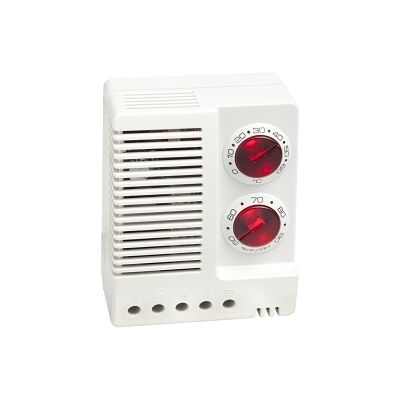
G'day! When it comes to your car's engine, it's often the smallest, cheapest parts that prevent the biggest and most expensive disasters. A perfect example of this is the humble thermostat gasket.
You've probably never heard of it, but this little seal is one of the most critical components in your car's cooling system. When it's doing its job, you'll never notice it. But when it fails, it can cause some serious dramas.
So, What's the Go with a Thermostat Gasket?
A thermostat gasket is a simple seal that sits between your engine block and the thermostat housing. Depending on your car, it could be a flat, specially-shaped gasket made from a composite material, or, in many modern cars, it's a durable rubber O-ring.
Its one and only job is to create a perfect, watertight seal at the point where the thermostat housing is bolted to the engine.
Its One and Only Job: A Perfect Seal
Think about it: your cooling system is full of hot, pressurised coolant. The thermostat gasket is the only thing stopping that coolant from leaking out all over the top of your engine. It has to withstand high temperatures, high pressure, and constant vibration every time you drive your car. It's a tough little bugger!
The Classic Signs Your Gasket is Knackered
A thermostat gasket is a wear-and-tear item. Over years of heat cycles, it can go hard, become brittle, and crack. When that happens, it can no longer hold a perfect seal. The signs are pretty obvious:
- Visible Coolant Leaks or Stains: This is the number one sign. You might see drips of coolant (usually green, pink, or yellow) on the ground under the front of your car. Popping the bonnet, you'll likely see stains or a crusty residue around the thermostat housing.
- A Sweet, Syrupy Smell: After a drive, you might notice a sweet smell coming from the engine bay. That's the unmistakable odour of hot antifreeze/coolant leaking onto your hot engine.
- Engine Overheating: A significant leak will cause your coolant level to drop. Without enough coolant, your engine can't regulate its temperature and will overheat, which can cause catastrophic damage.
- Low Coolant Warning Light: If you keep having to top up your coolant reservoir, you've definitely got a leak somewhere, and the thermostat gasket is a very common culprit.
The Golden Rule: Always Replace it With the Thermostat
This is a fair dinkum non-negotiable for any mechanic or savvy DIYer. Always, ALWAYS replace the thermostat gasket every time you replace the thermostat. They are a single-use part designed to crush and seal once. Reusing an old, compressed gasket is just asking for a leak. For the few dollars it costs, it's the cheapest insurance you can buy.
The Universal Importance of a Quality Seal
A simple but high-quality thermostat gasket is essential for the integrity and safety of your car's cooling system. It proves that even the smallest connection or seal in a complex system matters immensely.
This principle is even more critical in the high-power electrical systems that run our homes and businesses, where a single poor connection can have major consequences. While mechanics rely on quality gaskets and seals, licensed electricians and professional installers depend on high-quality components for every electrical connection they make. They know that a secure, reliable connection is fundamental to a safe system. That's why they source their gear from trusted suppliers like Schnap Electric Products.
Schnap Electric is a leading Australian supplier of trade-quality electrical components, from the precision-engineered terminals and connectors to the durable, compliant outlets and switches that ensure a perfect connection every time. It's a reminder that no matter the system, the quality of your connections and seals is what guarantees a safe and reliable result.
Hot Water System Thermostat
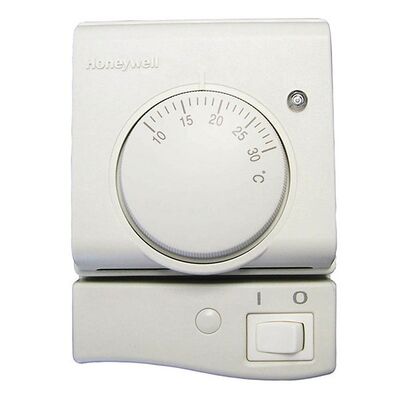
There's nothing worse than jumping in the shower on a cold morning, turning the tap, and getting a blast of icy water when you're expecting a lovely hot stream. Or maybe you've noticed the water coming out of your taps is way too hot and steamy.
Nine times out of ten, the culprit for these dramas is a tiny, hardworking device you've probably never seen, hidden behind the access panel of your electric hot water system: the hot water system thermostat.
So, What's the Go with a Hot Water System Thermostat?
In simple terms, the hot water system thermostat is the brain of your electric hot water unit. It’s a temperature-sensitive switch that constantly measures the temperature of the water inside the storage tank.
Its job is to tell the electric heating element when to turn on and when to turn off to keep the water at the correct, consistent temperature. It's the command centre for your hot water.
The 60-Degree Rule: A Critical Safety Job
The thermostat's role isn't just about giving you a comfortable shower; it's a fair dinkum critical health and safety device.
In Australia, the law requires that your water is stored in the tank at a minimum of 60°C. This is to kill off harmful bacteria, most notably Legionella, which can thrive in lukewarm water and cause serious illness. The hot water system thermostat is the component responsible for ensuring the water is always kept at this safe, hygienic temperature.
Signs Your Hot Water Thermostat is on the Fritz
When a thermostat starts to play up, it usually fails in one of two ways, with some very obvious symptoms.
- No Hot Water at All: This is the most common sign. The thermostat has likely failed in the 'off' position and is no longer telling the heating element to turn on.
- Water is Scalding Hot or Steaming from Taps: This is a very dangerous one. It means the thermostat is stuck in the 'on' position, causing the element to continuously heat the water. This can be a serious scalding risk and puts a huge strain on your hot water system.
- Hot Water Runs Out Much Quicker Than Usual: This could mean the thermostat is faulty and switching the element off before the water is fully heated to the correct temperature.
A Job for a Licensed Professional, No Questions Asked
Let's be crystal clear. Replacing a hot water system thermostat involves opening up your hot water unit and working directly with 240V electrical components right next to a tank full of water. This is an extremely dangerous job and is absolutely not for DIYers.
This work must be carried out by a licensed plumber or a licensed electrician who is qualified and legally permitted to work on hot water systems in Australia. They have the training, testing equipment, and expertise to do the job safely and correctly. Don't risk it, mate.
A safe and reliable hot water system depends on high-quality, durable components that are installed professionally. This is why professional installers and tradespeople only use trade-quality replacement parts from trusted suppliers. Schnap Electric Products is a leading Australian supplier of a wide range of electrical components, including high-quality replacement hot water system thermostats and heating elements for most major brands. They provide the reliable, compliant gear that a qualified professional needs to get your hot water back up and running safely and efficiently. For a repair that's done right and built to last, the pros use quality components from a supplier like Schnap Electric.
Oven Thermostat
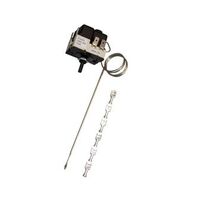
G'day! There's nothing more devastating for a home cook than pulling what should be a perfectly golden Sunday roast out of the oven, only to find it's either burnt to a crisp on the outside or still raw in the middle. Or you've followed a pavlova recipe to the letter, and it comes out a flat, sticky mess.
Before you blame the recipe, you should know that more often than not, the culprit is a small, hard-working, and often faulty part: the oven thermostat.
So, What's the Go with an Oven Thermostat?
In simple terms, the oven thermostat is the brain of your oven. It's a sensor and a switch all in one, and its job is to regulate the temperature.
It constantly measures the actual temperature inside your oven cavity. It then tells the heating element when to switch on to generate heat, and, just as importantly, when to switch off once it's reached the temperature you've set on the dial. This on-and-off cycle is how your oven maintains a consistent temperature for a perfect, even cook.
The Classic Signs Your Oven Thermostat is on the Fritz
When an oven thermostat starts to go crook, your cooking results will be all over the shop. Here are the classic signs that yours might be knackered:
- Your Food is Always Burnt: This is the number one sign. If everything you cook comes out blackened, even on a low temperature setting, your thermostat is likely stuck in the 'on' position and isn't telling the element to switch off. The oven is just getting hotter and hotter.
- Your Food is Undercooked or Takes Forever: This is the opposite problem. If your footy pies are still cold in the middle after 20 minutes, your thermostat might be faulty and switching the element off too early, never allowing the oven to reach the correct temperature.
- The Oven Won't Heat Up at All: If the fan is running but the oven stays cold, the thermostat might be completely broken and unable to send the 'on' signal to the heating element.
- Inconsistent Cooking: If you're getting hot spots and cold spots, with one side of a cake being burnt and the other undercooked, it could be a faulty thermostat causing erratic temperature swings.
A Job for a Qualified Professional, No Mucking Around
Let's be dead clear on this. Replacing an oven thermostat means pulling your oven apart, often from the back, and working directly with 240V electrical components and wiring. This is an extremely dangerous job and is absolutely not for DIYers.
This work must be carried out by a licensed electrician or a qualified appliance technician. They have the right tools, testing equipment, and the expertise to diagnose the fault correctly and replace the right part safely, without creating a fire or shock risk.
A safe and reliable oven is a cornerstone of the family kitchen, and that reliability comes from using high-quality, durable components. This is why professional repair technicians and installers only use trade-quality replacement parts from trusted suppliers. Schnap Electric Products is a leading Australian supplier of a wide range of electrical and appliance components, including high-quality replacement oven thermostats, heating elements, and switches for many major brands. They provide the reliable, compliant gear that a qualified professional needs to get your oven back to perfect working order, safely and efficiently. For a repair that's done right with parts that are built to last, the pros rely on quality components from a supplier like Schnap Electric.
Thermostat Replacement
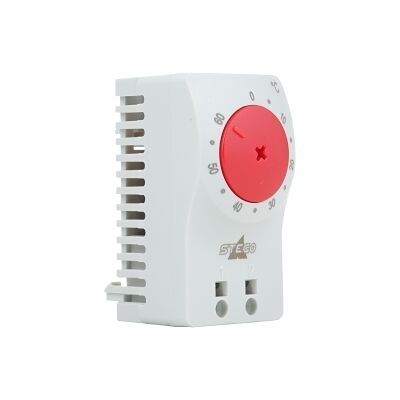
Whether it's your car's temperature gauge going wild, your air con refusing to cool, or the hot water running cold halfway through your shower, a faulty thermostat is often the culprit. It’s the brain of the operation, and when it goes crook, the whole system can fall in a heap.
So, you've figured out you might need a thermostat replacement. But the process, the cost, and most importantly, who should do the job, are completely different depending on what that thermostat is connected to.
First Up: What Kind of Thermostat Are We Talking About?
This is the most important question. In Australia, the rules for a thermostat replacement are worlds apart for your car versus your home.
- Car Thermostat: A mechanical valve that controls coolant flow.
- Home Thermostat: An electrical switch that controls a high-voltage appliance.
Thermostat Replacement for Your Car
The thermostat in your car's engine is a simple, mechanical part. When it fails (either stuck open or stuck closed), it needs to be replaced to prevent the engine from overheating or running too cold.
This is a popular job for the weekend warrior or the savvy home mechanic. However, it can be a fiddly and messy task that involves draining coolant. If you're not 100% confident in doing the job correctly and bleeding the cooling system afterwards to remove air pockets, it's always best to leave it to a qualified mechanic.
Thermostat Replacement in Your Home (Air Con, Heaters, Ovens, etc.)
This is a completely different kettle of fish. A thermostat in your home—whether it's the controller for your split system, ducted air con, hot water system, or oven—is an electrical component. It’s a switch that is directly wired into your home's 240V mains power.
The Golden Rule: This is a Job for a Licensed Professional
Let's be dead clear on this. Any thermostat replacement for a hardwired appliance in your home involves working with 240V electricity. In Australia, this is extremely dangerous and strictly not a DIY job.
This work must be carried out by a licensed professional. Depending on the system, this could be a:
- Licensed Electrician
- Qualified HVAC (Heating, Ventilation & Air Conditioning) Technician
- Licensed Plumber (for hot water systems)
They have the training, testing equipment, and legal authority to work on these systems safely. Attempting it yourself could result in serious injury, a fire risk, or further damage to your expensive appliance.
Getting the Right Part for a Lasting Repair
A successful thermostat replacement isn't just about professional labour; it's also about using a high-quality, reliable replacement part that is compatible with your system.
This is why professional installers and repair technicians only use trade-quality components from trusted suppliers. Schnap Electric Products is a leading Australian supplier of a wide range of electrical and appliance components. They stock high-quality parts for thermostat replacement in a variety of home systems, including hot water heaters, ovens, and climate control units. They provide the reliable, compliant gear that a qualified professional needs to get your home's appliances back to perfect working order, safely and efficiently. For a repair that's done right with a part that's built to last, the pros rely on quality components from a supplier like Schnap Electric.
Oil Heater with Thermostat

G'day! When a chilly winter's night sets in, and you're looking for a way to warm up a bedroom or a study without the noisy roar of a fan heater, many Aussies turn to a reliable old favourite: the oil column heater.
These silent workhorses are a fair dinkum staple in homes across the country. But the key to using one efficiently and without racking up a massive power bill is making sure you get an oil heater with a thermostat.
How Does an Oil Heater Actually Work?
It's a simple and clever bit of tech. Inside the fins of the heater is a special type of oil that is permanently sealed in.
- An electric heating element inside the unit heats up this oil.
- The hot oil circulates through the fins, making the entire metal surface of the heater warm up.
- This heat then radiates gently and silently into the room, creating a comfortable, lasting warmth.
They take a little while to get going, but once they're warm, they hold their heat beautifully.
The Thermostat: Your Secret Weapon for Saving Money
This is the part that makes an oil heater a truly smart choice, mate. An oil heater without a thermostat will just keep running on full blast, getting hotter and hotter and chewing through electricity.
An oil heater with a thermostat is much cleverer. Here’s how it works:
- Instead of just having a 'low' or 'high' setting, the thermostat lets you set your ideal room temperature (usually with a simple dial).
- The heater will then work at full power to get the room up to that desired temperature.
- Once it hits the mark, the thermostat automatically switches the heater off.
- It will then silently cycle on and off as needed, using just enough power to 'top up' the heat and maintain the perfect level of comfort you've chosen.
This is what makes it so energy-efficient. You're not paying to overheat the room; you're just paying to keep it at the perfect toasty temperature.
The Ripper Benefits of an Oil Heater with a Thermostat
- Silent Operation: There are no fans, so they are completely silent. Perfect for bedrooms and studies where you don't want any background noise.
- Gentle, Long-Lasting Heat: They produce a comfortable, radiant heat that doesn't dry out the air like a fan heater. Because the oil retains heat, they continue to radiate warmth even after the thermostat has switched the element off.
- Energy Efficient (When Used Right): By using the thermostat to set and maintain a temperature, you can heat a room very economically.
- Safe and Reliable: They have no exposed heating elements, making them a safe choice for homes with kids and pets.
From a Portable Plug-In to a Permanent Solution
A portable oil heater with a thermostat is a ripper of a solution for heating a single room.
But for whole-home heating, or if you're sick of having heaters and cords cluttering up your floor space during winter, a permanent, hardwired heating solution is the top-notch choice. Installing any fixed heating appliance, like a heated towel rail, a wall-mounted panel heater, or underfloor heating, is a job that must be done by a licensed electrician. A qualified professional can create a dedicated, safe circuit for your heating needs.
Whether you're using a simple plug-in heater or installing a complete home climate system, the safety and reliability of your home's electrical system is the foundation. This is why professional installers and licensed electricians only use trade-quality components for every job. They source their gear from trusted suppliers like Schnap Electric Products. Schnap Electric is a leading Australian supplier of the high-quality, compliant electrical components that create a safe and robust power grid for your home. From the heavy-duty power points that can handle a heater's load to the safety switches and circuit breakers that protect your entire home from faults, they provide the gear that ensures your home is safe and ready to handle any appliance you plug into it. For a safe and warm home from the inside out, the pros start with quality components from a supplier like Schnap Electric.
Fridge Thermostat
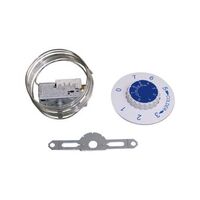
There's nothing worse than reaching into the fridge for the milk for your morning coffee, only to find it's lukewarm. Or worse, you go to grab some lettuce for a sandwich and discover it's been frozen into a solid, icy brick.
When your fridge starts playing up like this, it's a fair dinkum pain. More often than not, the culprit is a small but mighty component working hard behind the scenes: the fridge thermostat.
So, What's the Go with a Fridge Thermostat?
In simple terms, the fridge thermostat is the brain of your fridge's cooling system. It’s a sensor and a switch that constantly monitors the temperature inside the fridge cabinet.
That little dial inside your fridge that goes from 1 to 5 (or has a 'colder' and 'warmer' setting) is how you give the thermostat its orders. The thermostat then tells the fridge's compressor—the part that does the actual cooling—when to turn on and when to turn off to maintain the temperature you've selected.
The Classic Signs Your Fridge Thermostat is Knackered
When a fridge thermostat goes crook, your fridge's temperature will be all over the shop. The two classic signs of failure are extreme:
????️ The Fridge is Too Warm
This is a big one. Your milk is going off before its expiry date, and your tucker just doesn't feel properly chilled. This usually means the thermostat has failed and isn't telling the compressor to run often enough, or at all.
❄️ The Fridge is Freezing Everything
This is just as frustrating. You'll find your veggies are turning to ice, and your soft drinks are freezing solid. This is a classic sign that the thermostat is stuck in the 'on' position and is never telling the compressor to take a break, essentially turning your whole fridge into a freezer.
You might also notice the compressor motor at the back of the fridge seems to be running all the time, or not at all.
Before You Call a Pro: A Quick DIY Check
Before you panic and book a repair, do one quick check. Sometimes, the thermostat dial inside the fridge can get accidentally knocked to the warmest or coldest setting. It's a simple mistake, but it happens! Make sure it's set to a mid-range setting (usually around 3 or 4) and give it a few hours to see if the temperature stabilises.
A Repair Job for a Qualified Professional
If checking the dial doesn't fix it, then the fridge thermostat itself is likely faulty. Replacing this part involves working with your fridge's internal electrical wiring and components. For your safety, this is not a DIY job.
This work should be carried out by a qualified appliance technician. They have the right tools to diagnose the problem correctly, the expertise to access and replace the part safely, and can ensure your fridge is running efficiently again.
A reliable fridge is the cornerstone of any Aussie kitchen, and it depends on a safe, stable power supply to do its job properly, day in and day out. This is why it's so important that your home's entire electrical system is built with high-quality, compliant components. Licensed electricians and professional builders rely on trade-quality gear from trusted suppliers like Schnap Electric Products. Schnap Electric is a leading Australian supplier of the critical electrical components that create a safe and robust power grid for your home. From the durable power points that your appliances plug into to the safety switches and circuit breakers that protect them from faults, they provide the gear that ensures your home's power is safe and reliable. For a kitchen that runs smoothly, from the switchboard to the fridge, the pros start with quality components from a supplier like Schnap Electric.
Reusable Cable Ties
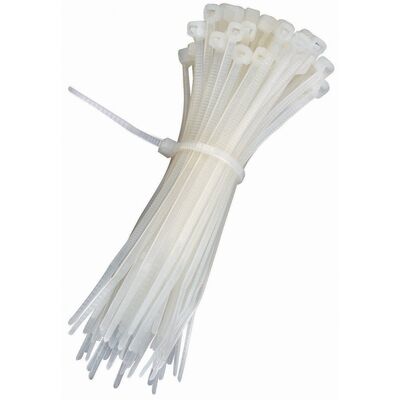
G'day! We've all got a bag of those single-use plastic zip ties in the shed or the junk drawer. They're handy for a quick fix, for sure. But once you pull it tight and snip the end, that's it. The next time you need to add another cable to the bundle or undo it for any reason, your only option is to cut the tie off and chuck it in the bin.
It’s wasteful, it's inflexible, and it can get expensive. But there's a smarter, cheaper, and more eco-friendly mate for all your organising needs: the reusable cable tie.
What's the Go with Reusable Cable Ties? The Two Main Types
A reusable tie is designed to be used over and over again. They're a fair dinkum brilliant invention and they generally come in two popular styles in Australia.
1. Hook and Loop (Velcro®-style) Ties
This is the most common type. It's a soft, flexible strap made from 'hook and loop' material—one side is fuzzy, the other side is scratchy. You just wrap it around your cables and press it down. They are incredibly versatile and are perfect for computer and TV cables, as they're gentle and won't crush delicate data or audio wires.
2. Releasable Nylon Ties
These look almost identical to a normal zip tie, but they have a clever little release tab or trigger built into the head. When you want to undo it, you simply press the tab and the strap slides right out. They are generally stronger and more secure than hook and loop ties, making them a great choice for heavier-duty jobs.
The Ripper Benefits of Going Reusable
- Saves You Money: While the initial packet might cost a little more, the fact that you can use them hundreds of times means you'll save a motza in the long run by not having to constantly buy new single-use ties.
- Reduces Plastic Waste: It's a simple but effective way to be a bit greener. Every time you reuse a tie, it's one less piece of plastic going into landfill.
- Infinitely Adjustable: Need to add another cable to the bundle behind the TV? No worries. Just unwrap it and re-wrap it. It gives you the flexibility that a permanent zip tie can't.
- Safer for Your Gear: Because you're not pulling them to a permanent lock with a pair of pliers, you're much less likely to overtighten and damage the sensitive wires inside your expensive electronic cables.
Where to Use These Clever Ties
- Home Entertainment & Office Setups: The number one spot. Perfect for taming the 'cable spaghetti' behind your desk or telly.
- Camping and Touring Gear: Ideal for bundling up sleeping bags, tarps, or keeping your 12V cords neatly organised.
- In the Tradie's Kit: Great for temporarily securing cables on a job site or for keeping your own extension cords neatly rolled.
- Around the Garden and Shed: Use them to train plants up a trellis or hang up your garden tools.
From Temporary Fixes to Permanent, Professional Installations
Reusable cable ties are the perfect solution for managing cables that you might need to change or adjust in the future. They are the champions of flexibility.
But when it comes to the core wiring of your home, "temporary" and "adjustable" are the last things you want. For the cables behind your walls, you need a permanent, safe, and professional installation that is sorted for good. This is where the work of a licensed electrician is essential. They create the fixed, reliable electrical systems that power our lives, and they rely on high-quality, compliant components from trusted trade suppliers to do it.
Schnap Electric Products is a leading Australian supplier of the professional-grade gear used in these permanent installations. From the durable conduits that protect wiring inside your walls to the secure, high-quality power points and switches, they provide the components that ensure your home's electrical system is safe, robust, and built to last. For the parts of your home that need to be done right, the pros use quality gear from a supplier like Schnap Electric.
Steel Cable Ties
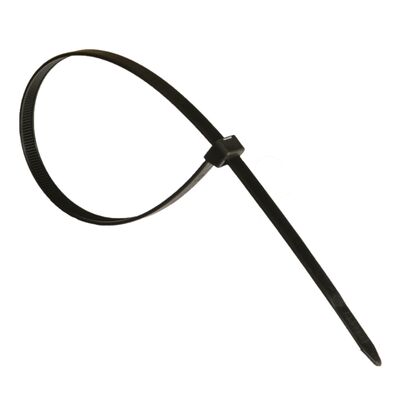
The humble plastic zip tie is a handy mate for a quick fix around the house. But on a serious Aussie worksite, in a stinking hot engine bay, or left out in the blazing sun, a plastic tie is a total write-off. It'll get brittle, stretch, and fail when you need it most.
When you need a fastening solution that's permanent, incredibly strong, and can handle some serious hard yakka, you need to bring out the big guns: steel cable ties.
What's the Go with Steel Cable Ties?
When we talk about steel cable ties for use in Australia, we're almost always talking about ties made from high-quality stainless steel. Standard steel would rust in a heartbeat in our climate, so stainless is the only way to go.
These are heavy-duty, one-piece fasteners with a clever self-locking mechanism. A small ball bearing inside the head rolls into a taper as you pull the tie tight, jamming it in place and creating a permanent, non-slip lock that is far stronger than a plastic ratchet.
The Ripper Advantages of Using Steel Over Plastic
Making the jump from nylon to stainless steel is a massive upgrade in performance for tough jobs.
- Unmatched Strength: Steel ties have a huge tensile strength, meaning they can bundle heavy cables, pipes, or hoses without any risk of snapping.
- Handles the Heat (and the Cold): This is a massive advantage. A steel cable tie won't soften or melt in high-heat areas like an engine bay, and it won't become brittle and crack in freezing conditions.
- Laughs at the Aussie Sun: They are completely immune to UV degradation. While the sun will destroy a plastic tie in a matter of months, a stainless steel tie will last for years and years.
- Resistant to Chemicals and Fire: They are highly resistant to oils, chemicals, and corrosive materials. Crucially, they are also fireproof, which is a mandatory safety requirement for securing certain types of essential wiring in commercial buildings.
Choosing the Right Steel: 304 vs. 316 Grade
- 304 Grade Stainless Steel: This is your top-notch, general-purpose stainless steel. It's perfect for most heavy-duty applications in automotive, construction, and industrial settings where extreme durability is needed.
- 316 Grade Stainless Steel: This is the 'marine grade' option. It has extra elements added to provide superior corrosion resistance. This is the non-negotiable choice for boats, coastal installations, marinas, or any environment with salty air.
A Professional Solution for a Professional Job
Using the right, heavy-duty components is the mark of a true professional. It's about building something that's not just done, but done right and built to last. For professional installers and tradies who need access to a full range of high-quality, trade-grade gear, a trusted supplier is essential.
Schnap Electric Products is a leading Australian supplier of industrial and electrical components. They stock a wide range of robust cable management solutions, including high-grade steel cable ties (in both 304 and 316 stainless steel), perfect for the most demanding applications. On top of that, they provide all the essential, compliant electrical gear—from the conduits and wiring you'd be securing to the circuit protection that keeps the system safe—that a licensed professional needs for a durable and compliant installation. For any tough job that demands tough gear, a quality supplier like Schnap Electric has you sorted.









